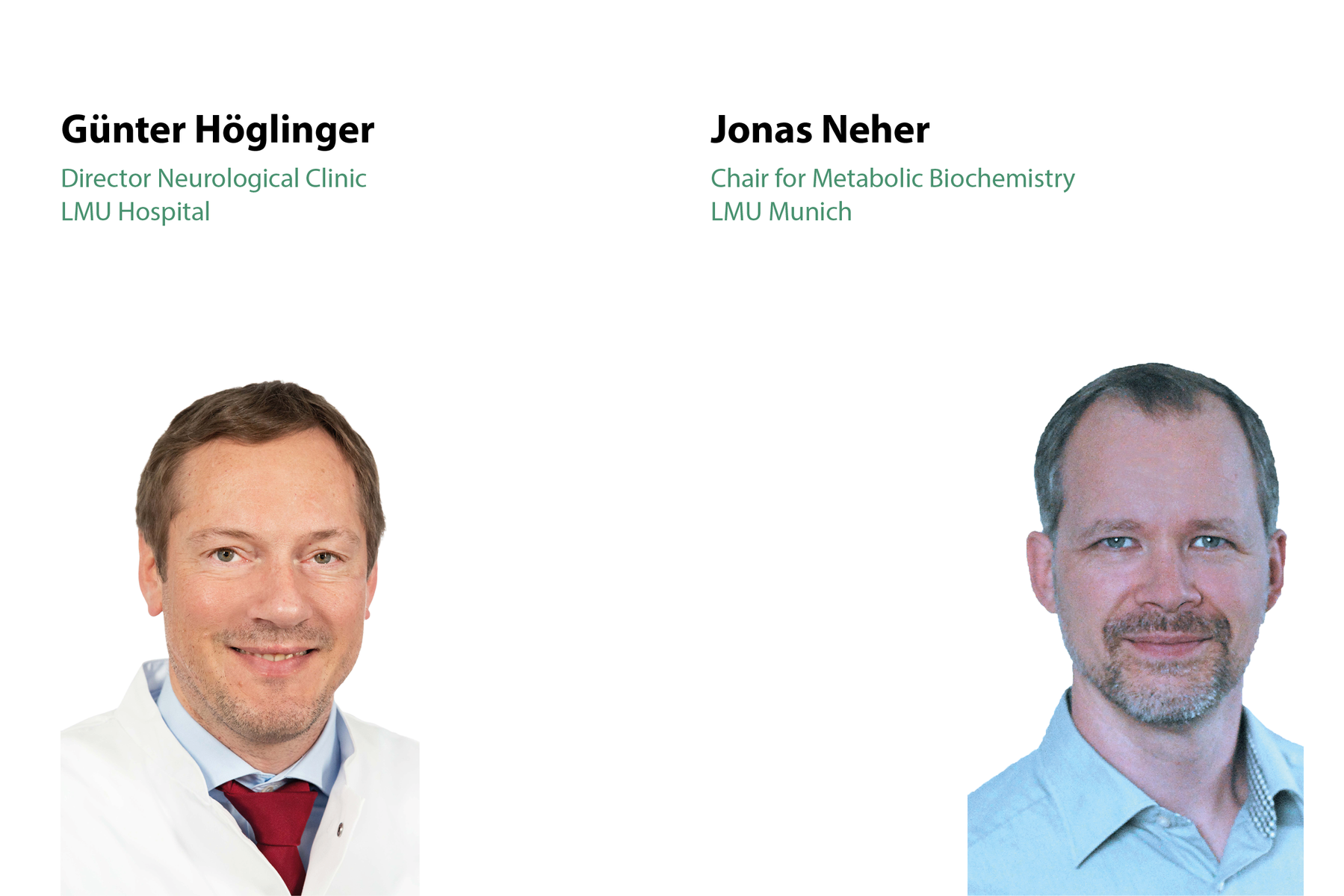Developing, improving, and validating disease models
Günter Höglinger links patient-oriented and fundamental research to develop new diagnostic and therapeutic concepts. Utilizing insights from clinical research, his team develops and improves disease models and new concepts from preclinical research to validate them in human patients. Their focus is on diseases characterized by the pathological spread and aggregation of tau protein (such as Alzheimer's disease, forms of frontotemporal dementia, progressive supranuclear palsy, and corticobasal degeneration) or alpha-synuclein (including Parkinson's disease, Lewy body dementia, and multisystem atrophy).
Pathogenic forms of both alpha-synuclein and tau are considered infectious proteinaceous particles that chronically and progressively damage brain cells. Susceptibility and resilience factors are a focus of their research to develop new therapies. Within SyNergy, his team will investigate the cellular and molecular mechanisms that control the trans- and intracellular transport of tau and alpha-synuclein and other pathogenic molecules in the context of brain diseases.
Analyzing Alzheimer’s disease pathogenesis from the molecular to the functional level
Neurodegenerative diseases are now recognized as being multifactorial disorders. This means that in order to develop effective treatments, there is a need to understand the contribution of individual pathological changes and their additive or synergistic effects. Therefore, Jonas Neher’s lab works on how age-related changes, protein aggregation as well as vascular dysfunction contribute to Alzheimer's disease pathogenesis. Their current interests include the role of the innate immune system and vascular amyloid aggregates in these processes. The team’s move to Munich and becoming part of the SyNergy cluster, will allow them to expand their research strategy and methodologies: they aim to analyze the different components of Alzheimer's disease pathogenesis from the molecular to the functional level, a so-called systems medicine approach.
Creating SyNergies
Both newly appointed Principal Investigators are looking forward to the exchanges and collaborative projects within our cluster. “Our research perfectly fits the three current research areas of SyNergy: inflammation, degeneration, and glio-vascular dysfunction. In the short time since joining SyNergy, we have already established several collaborative projects, which I am excited to develop over the following years!” says Neher. Höglinger adds: “SyNergy offers a unique environment for research into neurological diseases. The combined availability of outstanding neuroscience methods and experience with disease models and human patient samples allows us to study human brain diseases unprecedentedly. The stimulating culture of critical and always forward-thinking scientific debate within SyNergy is unmatched.”
